November 25th, 2011
Chasing The Curve: A Portrait of the Sea
Australian photographer Trent Mitchell has released his first solo (awesome) book titled: "Chasing The Curve: A Portrait of the Sea". A collection of his finest personal work to date, presented in a beautiful hardback format. Images rendered on 35mm film and meticulously reproduced as they were captured, the photographs transport you through a powerfully abstract journey surrounding the cyclic moods of the sea. From awe-inspiring seascape panoramas, to dramatically surreal moments in turbulent seas, Trent presents a visual exploration of light, energy and water with a diversity and eye like no-other.
Trent says: "Its been a really cool process producing it. Shooting, editing, scanning, designing and printing. A big solo effort that I’m really proud of. It’s all shot on film to keep the book authentic and the feeling just right. It’s all about the ocean and the shots are big, clean and printed on beautiful stock. Kept minimal in every way, it’s a true photography book. Lots of space and no words so the images can just do their thing."
Trent has setup a website specifically to promote his book, so check that out at: http://book.tmphoto.com.au. And of course, click here to purchase this book!
We’ve included an interview with Trent from his website that you can see below…
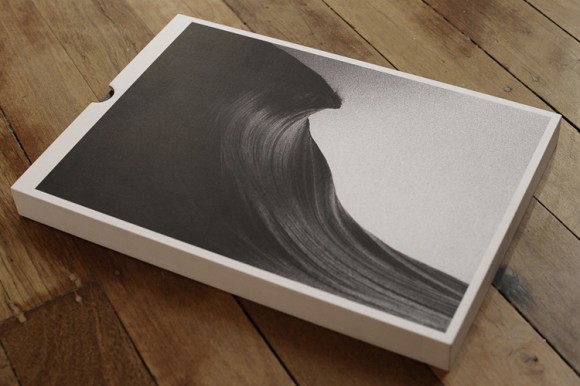
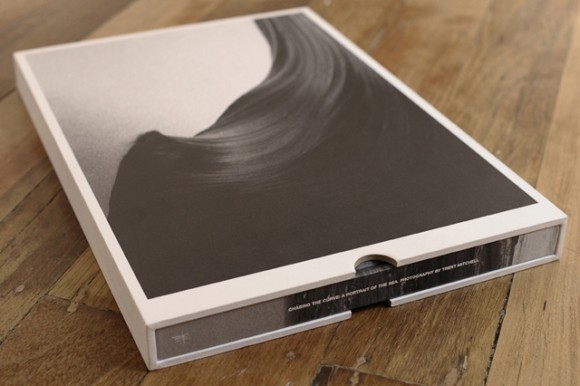
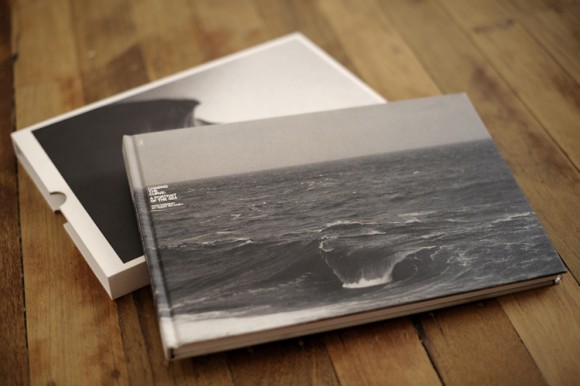
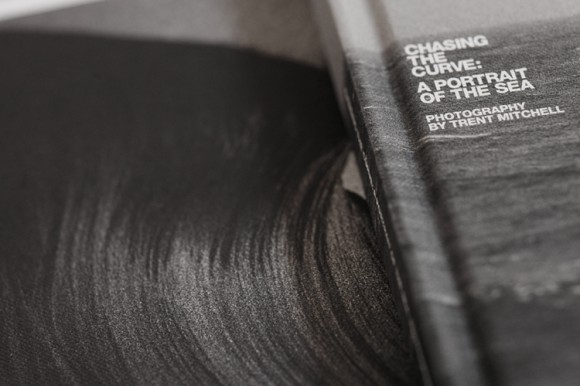
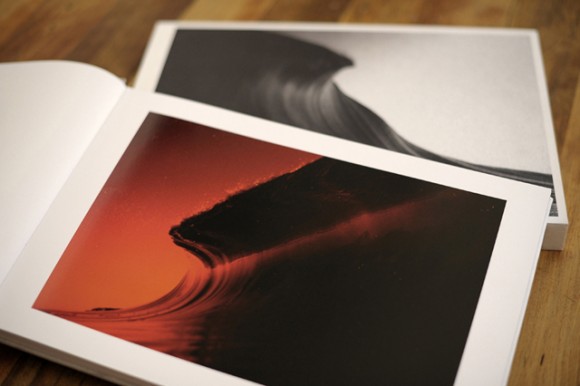
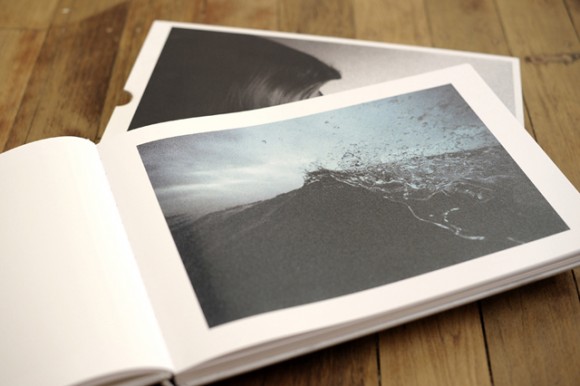
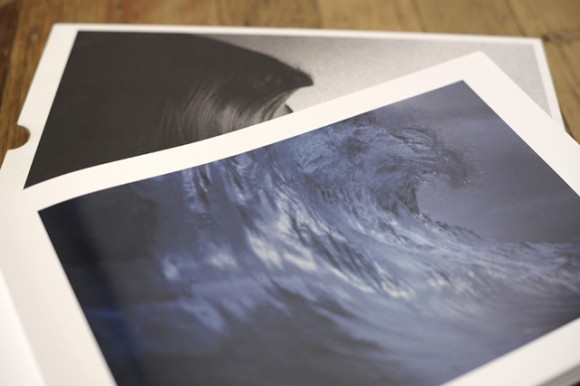
Book specifications:
– $95.00 AUD ( Free shipping Australia wide )
– Limited edition of 1000 copies
– Over 110 photographs
– Hardback with hardcover sleeve
– 164 pages, 170gsm stock
– Spot machine varnished
– 240mm x 360mm
– ISBN-978-0-646-56056-4
Interview with Trent Mitchell…
Did you have any particular influences (individuals or cultural) in your formative years that have brought you to where you are today as an artist?
Light, fundamentally, has always been my underlying influence. That has never changed at all and it never will. Everything I do comes back to that. Light aside, I would also have to say that working as a graphic designer for over eight years has influenced my work heavily, and more than I first realised. People say they can see design in my compositions; the balance of light and dark, positive and negative, the rhythm in the images as your eye dances around them. And working as a designer, that’s what you do with images and text on a blank page. You make the eye dance with positive and negative space, create mood with colour and tone. Lead the eye with shape and lines; all those things. In a way, photography is like design. You’re designing with life inside a fixed frame. In that little blacked off window they call a viewfinder. That’s kinda cool; you’re designing an image with light and all the other elements, instinctively as the moment fleets. So I think all that design backed up in my brain must make that fleeting moment a little easier to compose somehow? The process of picture making I can add to the list of influences here. I love the process. It drives me. Sometimes I take it for granted and then I stop, so I can refresh my eye and restart the creative cycle again. It’s that cycle that has brought me to where I am now.
You have an ability to create larger than life landscapes from miniature worlds; is this how you see your surroundings before the shutter is opened?
I always visualise a picture before I make it, especially images that are shot on film or that are based on a particular technique and environmental conditions. So I would have to say in some way that is true. There are certain things that you have to see before you have the ability to capture them. My mind is pretty out there sometimes. I see the smallest details and I recognise them as something that makes you feel connected to your surrounds. In this body of work it is the details in moving water and light. It’s a real challenge trying to render what you see in your mind’s eye, then have it translate from a real moment that happened, into a picture. It’s the coolest process. When it comes together like that it feels like you’re very connected to where you are and what you are doing. It’s a really pure feeling of creativity that gets me addicted.
Texture and grain seem to have been a growing curiosity and interest of yours, particularly in the latter stages of the book. Can you describe or explain your affinity with this aesthetic?
I have always loved the aesthetic of film. From looking at the film to the finished printed image, photographs just feel better to digest visually with grain and texture. And it’s this concept that intrigues me. I have always had a passion for visual communication so the notion of why it feels so good to look at is part of the reason why I started taking pictures in the first place. It’s real, it’s tactile and it has its own life. That’s why I like using film. I can’t pin it down exactly, but it does have its own life and you can feel the difference in the end result. If a photo has no feeling there is no point, for me. So film it is for all of my personal work, no question. There is a certain sense of nostalgia about it all as well. I wanted to communicate how I see things and photography just seemed to suit me. It was the perfect creative medium for me. I just got it and I fell in love with the process of capturing a vision with the aesthetic of film.
Is every image featured in the book shot on film? Can you explain why this was so important to you in the capture process?
Yeah, every shot was taken with film. It was a tough decision to make, as some of my digital photos are beautiful, but ultimately the book is a body of work; a collection. I wanted the aesthetic to be consistent throughout. It would have been easier to mix digital and film. I wasn’t into that. I had a holistic vision. I wanted the parts to all feel the same or similar to make the sum as strong as it could be. I didn’t want to fake anything. I didn’t want to mix the techniques in one body of work. I really don’t think it would feel right. In the end I took the longer, harder path. I hope people see the worth in it. I loved every bit of it.
Can you describe your creative process in terms of the capture; some of the feelings, factors and decisions that have been integral in creating some of these images?
Creating a vision in my mind of a particular location and what I can do with that location, that’s the bottom line for all of the images. The second thing is being calm, centred, patient and ready for the picture to happen. If I am swimming you can multiply those factors a few times and add fear in there too on the odd occasion. Quite a few times I have ended up in compromising positions just to get a stupid picture. Obviously the results are worth it, if it all falls into place. Dealing with the ocean, 90 percent of the capture process is out of your hands. Sure, you can operate your equipment and you have choices there, but you are pointing a lens at such an infinitely changeable subject; at every millisecond things are changing and they are completely out of your hands. You have no control over light or your subject. It’s definitely the hardest photographic genre I have shot in that regard. All the factors and decisions are instinctively reacted to in the moment, because that’s where they have to be. You never get a second chance because things are never the same again.
Capturing the image is one process. Creating a book is something else altogether; a process with a litany of different options and outlets. What were some of the main considerations? The turn of the page? The stock? The feel? The image editing? The continuity? The rhythm? How much did you consider the reader?
Designing a book is completely different process to capturing an image. As with all creative processes, it’s best to start out with a brief. I was making a book and the fundamental structure of the book, the page size, is the most important thing in my opinion. The photographer in me wanted to keep true to the aspect ratio of 35mm film so 240mm x 360mm landscape felt like a perfect size. Every crop in the book is true to the 3:2 ratio and the panoramic images, being shot on a panoramic rangefinder camera, are true to the aspect ratio of 3:1. Every image has been cropped as it was shot. This may seem a bit over the top, but it’s easier to make decisions while editing if the shot doesn’t need cropping. A good picture doesn’t need cropping. And in a purist sense I wanted to present the photographs how they were captured.
Stock and printing techniques are the other physical aspects of the design that need to be considered carefully. Well, I considered everything carefully. The paper, the printer I chose to use, the editing process, the scanning, the design. Everything. Picture selection; that was a bit of a nightmare. Don’t get me wrong, I loved doing it, but I had a lot of images that could have been published, and I could have made the book really thick. Some of my favourite shots didn’t make the cut because I felt they were a little too abstract; too far from the purpose of the book’s direction.
The decision-making process was all about image quality, feelings, variety, colours, etc. So that’s on an individual picture edit. Then the order of the images has to be spot on. When you say rhythm it couldn’t be more true. It’s the gaps between the pictures, the picture sizes, space surrounding them and the page turns that make it what it is. The spaces in between are what create anticipation and heighten curiosity; they keep you turning.
I wanted to keep this whole project pretty minimal and it’s a hard thing to do. I think there are two sentences in the whole book! Hardly any text. I always wanted it to be this way and I had a lot of people telling me it was the wrong thing to do. People telling me I needed explanations of images, locations, stories, technical specs on the shots, what films I used, any complimentary text to keep it interesting really. I couldn’t see the point of putting words on pages just because. Ultimately it’s a book of photographs and the body of work is about the ocean as one. It’s about photos. And a journey. And it’s open for you to interpret how you see it. That’s it. So locations are irrelevant to the purpose of the work. In this case, I admittedly did not consider the reader as much as I should have. But I will tell anyone what they want to know if they ask, that’s for sure.
If your images are in any way an expression or extension of your moods, they paint a picture of a colourful and complex individual indeed! How do you set out to capture or convey mood?
I would say they are an expression of my mind’s eye and the moods of the sea. Not really my moods. Obviously how you feel at any given time affects how you react in any situation. I only have one mood when I am shooting in the water at my own will and that is a feeling of contentment. I’m not really thinking too much. Just reacting to the movements and small changes happening around you. I am being aware and I am trying to be in tune with my equipment as much as I am with the moving water around me; the rhythms and the light. Mood is such a funny thing to capture. I’m not sure if I do it well or not, as its all subjective. But, I believe mood is a combination of these elements like any visual communication. Colour, tone, positive and negative spaces, contrasts; gosh, there are so many more elements. Photographic ones include light, and the quality of that light, the subject and how you chose to interpret that subject with that light and the endless options of photographic technique. It’s bloody endless. That’s why I keep doing it I guess. Mood could just be a colour too. Point the camera at the sky, you get a blue picture and it just feels nice. It’s so endless, ha!
What was your favourite camera to shoot within the water and for this body of work, and why?
The Nikon FM2 with a 50mm 1.4 lens is my favourite camera/lens combination to use in the water, full stop. It’s everything you need and not a thing more. The less distractions the better when the ocean is moving violently around you and it’s the kind of lens and body choice that simplifies everything and makes seeing easy when you are in the midst of chaos. I love the perspective of the human eye and 50mm is the closest focal length to that. I want to use the focal length of the eye in most cases and create surreal images. A true perspective but changed into images that challenge the truth so to speak.
I also used a Hasselblad x-pan II for all the panoramic images in the book, both on the land and in the water. That camera is the best camera I own and makes the best pictures. It’s really tricky to use and master. You have to preset everything before you swim out, including the rangefinder focus. You get 20 shots and have so many limits to how you can shoot with it in a housing. You really need to have a specific picture in mind to get any decent results, let alone amazing ones. As far as I know, when I had it made about 5 or 6 years ago my housing guy, Dave Kelly, had never made a housing for the camera and never heard of anyone doing it either. I guess it was a first at the time. I’ll never sell that housing and camera. It’s rare to come by and Hasselbad stopped making the cameras. They are so beautiful.
You said to me once that you waited two years to capture one image. Can you talk about that image, how it was conceived and how it felt when you finally nailed it?
I had seen a lot of sculptural wave imagery before I took the particular shot, so my vision was influenced by that as a starting point. But I had a different take on it all on many different levels. I wanted to use a particular film to emphasise the water surface textures and to give the subject another abstract layer. And I wanted to shoot black and white to remove all colour influence on the viewer. So I had this overall vision of standing walls of water that may represent something different. A representation of natural elements, raw texture, power and strength. The whole idea was to create an image that looks surreal from a real moment. To create a still image that leaves you curious and full of wonder. I want to leave the viewer guessing all the time. It took me two years to find the right day and conditions to have the moment all fall into place. The funniest thing is that it was the first time I had ever photographed the location and it all came together so well, and that’s pretty rare with water photography. Looking back at it I could not have scripted a better day or outcome. A lot of the time that happens to me now I think about it.
I was swimming, shooting and really enjoying myself in that swell. It just felt really good being out there. I was halfway through my roll of film and I remember telling myself to slow down and wait. It would have been easy to finish the shots. I felt something was coming and I started waiting and only firing one shot at a time. I was waiting for what I thought was the perfect moment. It felt so good, I felt really connected to where I was right there and then.
As soon as I recognised how good and connected I felt, THE swell approached. It’s such a fast moving wave and so reactive off the sea floor and so changeable, but I remember watching it in slow motion standing tall. I remember watching the lip and the trough all form and warp at once as the wave felt the rock bottom on the sea floor. I even remember the offshore wind grooming the crest of the wave. I remember raising my camera knowing that it was the moment I had been waiting for. I know it sounds so cliche, but time did slow down and I remember pulling manual focus, shooting the one frame at exactly the right time. The composition through the viewfinder felt so good. I just knew that the shot was going to be one of my best instantly, and I rarely get that feeling while shooting. I dropped the camera from my eye and watched the wave warp and explode as it marched shoreward. Then I screamed with joy! It felt so good. I continued finishing the roll patiently and it ended up being one of my best rolls I had shot at the time, and one of the best rolls I have shot to this day. When I got the proof sheet back from the lab I couldn’t stop smiling. I knew I had captured something special, unique and surreal. All the visualisation had come together over a couple of years into one split second and it felt so good! It’s my all-time favourite shot so I decided to print it cleanly on the hardcover slip for everyone to enjoy.
*
See another interview with Trent on this website from 2009 at:
www.clubofthewaves.com/surf-photography/exhibit-trent-mitchell.php
